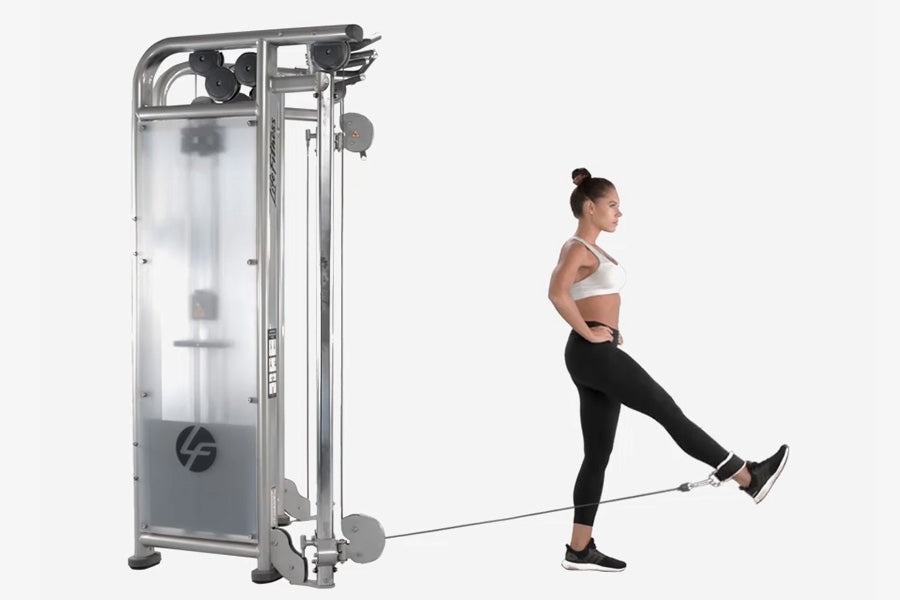|
Exercise Description |
|
|
Target Muscle Group |
Glutes |
|
Secondary Muscles |
Quads |
|
Exercise Type |
Strength |
|
Equipment Required |
Cable pulley machine |
|
Experience Level |
Beginner |
|
Compound/Isolated |
Compound |
|
Force Type |
Pull |
Target Muscles: Glutes and Quads

Cable Straight Leg Hip Flexions Overview
The hip muscles are important for a variety of different movements, including walking, running, and jumping. Strong hip muscles can help to prevent injuries, and also improve your overall performance in these activities. Additionally, strong hip muscles can help to alleviate lower back pain. Therefore, it is beneficial to exercise the hip muscles for both injury prevention and performance enhancement.
The cable straight leg hip flexion exercise targets the iliopsoas muscle group, which includes the psoas major and iliacus muscles. These muscles are responsible for flexing the hip joint, as well as stabilizing the pelvis and lower back. This exercise can be performed with a variety of different cable machines, or with a resistance band attached to a sturdy object.
How To Do It?
- This exercise will help you work up your glutes, quads and hip flexors.
- Attach the cable to your ankle strap
- Stand straight, with your back facing the cable pulley machine
- Start pulling your leg forward, up to a 45-degree angle
- Make sure you are keeping your knee straight while pulling
- Repeat the exercise on the other leg for12-15 reps per side
Tips For Cable Straight Leg Hip Flexion
- As with any exercise, it is important to warm up before performing the cable straight leg hip flexion.
- A light jog or dynamic stretching routine will help to prepare your muscles for the workout ahead.
- When using a resistance band, be sure to secure it firmly to avoid it snapping back and causing injury.
- If you are using a cable machine, be mindful of the weight you are lifting and do not exceed your personal lifting limit.
- Always use a spotter when performing this exercise with heavyweights.
- Lastly, be sure to cool down and stretch after your workout to avoid any muscle soreness.







